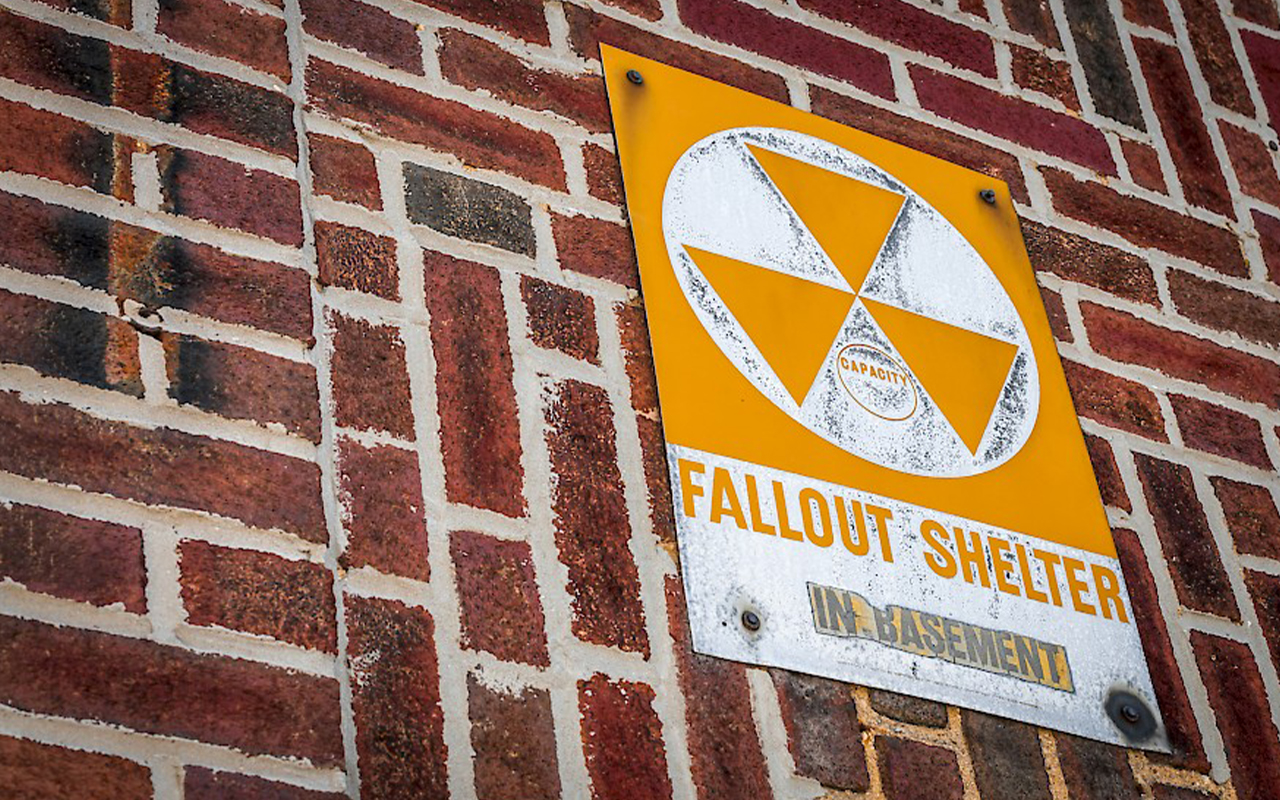In the civil defense era of emergency management, the federal, state, and local civil defense authorities were presented with the mission to protect the civilian population from an attack on the U.S. mainland. Shelter programs, coordinated public warning systems, emergency assistance provisions, and other protective measures were developed. Today, these measures need to be revisited and adapted in accord with current threats, timing, and resources.
The Office of Civil Defense and Mobilization was created by President John F. Kennedy via Executive Order 10952 in September 1961. This executive order established the creation of the Community Fallout Shelter Program, developed a coordinated public warning system, employed the provision of emergency assistance to state and local governments, and empowered the Secretary of Defense to plan for the continuity of government. It is important to put this in the context in which this executive order was enacted. These programs and initiatives occurred during the Cold War, in the atomic age, with a growing nuclear threat from Russia, and growing concerns from U.S. citizens over the effects of a first strike.
The United States is now faced with a renewed conversation about a nuclear threat, causing Hawaii to activate and perform a monthly test of their State Attack Warning Tone for the first time since the Cold War. The most recent routine test of the system created a widely publicized false alarm that occurred at 8:07 am on 13 January 2018 (see Fig. 1). This false alarm highlighted a flaw in Hawaii’s warning system in which a singular person could initiate activation. Hawaii is now moving to a two-person activation method in the aftermath of this event. Given the time lapse since the Community Fallout Shelter Program was established in 1961, many fallout shelters have since been closed, this poses the question of what would happen should this alarm have been real.

Historical Review
In order to fully understand the current situation, it is important to understand the origins of civil defense. President Franklin Delano Roosevelt established the Office of Civilian Defense (OCD) in 1941 to plan for a community-based response to protect civilians in the event of a military attack on U.S. soil. The OCD was an independent agency that coordinated with the Chemical Corps of the U.S. Army and the U.S. Public Health Service. When it was created, this office looked at the many hazards with which a community would be presented after a land attack.
At the end of World War II, the office was disbanded due to the decreased threat. This changed over the course of the next decade as the world entered the atomic age following the bombing of Hiroshima and Nagasaki in Japan and Russia detonating its first atomic weapon. As atomic threat became reality, the OCD went through several iterations throughout the years, most notably as the Federal Civil Defense Administration under President Harry S. Truman in 1951 and the Office of Civil Defense and Mobilization beginning in September 1961.
With the creation of the Community Fallout Shelter Program, thousands of shelters were built across the United States, especially in urban centers. The program focused on creating infrastructure and capacity along with a stringent training and exercise program. For many, the memory of a fallout shelter and “Duck and Cover” drills during elementary school remain. Throughout the decade-long tenure of this program, countless home and public shelters were built throughout the country, creating a sense of security and a belief that people could easily survive nuclear fallout in their geographic areas.
A significant amount of research was also performed on the human condition during an extended stay in a shelter with only Department of Defense rations, chemical communal toilet canisters, poor ventilation, and overcrowding. It was found that a lack of sleep, the chemical commode, and a lack of bathing facilities caused major discomfort, as well as headaches and nausea. Additional psychological issues included the ability to adjust to hygiene and decontamination rituals, to adapt to the change in living conditions, and to adapt to the uncertainty that lay outside. The response to these issues was training and the creation of motivational in-shelter programs that would enable people to emerge from the shelter in an emotionally stable condition. To a great degree, the activities may not have been realistic but designed to stabilize and support the anxiety and concerns exhibited by the populace.
For example, the OCD created a guidance document, entitled Fallout Protection. This training aid was used to guide families and communities in their preparedness and planning for a nuclear attack. It instructed families to stay in their fallout shelters for at least 14 days, and come out in increasing intervals beginning at no more than four hours per day. The Fallout Protection guide not only gave information regarding the effects of a nuclear blast and the subsequent fallout, but also gave instruction on supplies needed for survival. Additionally, this era led to the build out of multiple sites for continuity of government including: Orange One, which is the president’s bunker at Camp David; and Site R (Raven Rock Mountain Complex), which is the emergency operations center for the U.S. military.
In 1969, Congress began defunding the Community Fallout Shelter Program and, by 1972, merged the Office of Civil Defense and Mobilization into the Defense Civil Preparedness Agency. Since many of the public shelters were reliant on federal funding to maintain their functionality, the lack of funds diminished the feasibility of the shelters. In 1979, President James “Jimmy” Carter issued Executive Order 12148, which dismantled the Defense Civil Preparedness Agency and transferred all of its responsibilities to the Federal Emergency Management Agency. Since that time, the national response has moved away from a nuclear focus, and toward the all hazards approach currently used as the industry standard.
Changes & Current Standards
The primary change has been related to timing. In the 1960s, a nuclear device was delivered by plane, with an advanced warning potentially of up to 40 hours. In the age of the intercontinental ballistic missile (ICBM), notice is significantly shorter, usually less than one hour of lead-time. This is not enough time to report to an assigned community fallout shelter. As such, the focus has shifted to surviving the blast and staying indoors in the most central part of the nearest building when the blast occurs.
In addition to the launch of an ICBM, threat of a dirty bomb release exists and can happen with virtually no warning. In the case of a dirty bomb, the actual blast would likely not be the most deadly part of the attack. The fallout created by the release could create long-lasting health and safety issues in the region where the attack occurred.
Although there is a marked change in the timing of a release, the fallout risk remains the same in the aftermath of the event. In present day Hawaii, emergency planners have re-tooled some of the Civil Defense Era planning and response methods. As previously mentioned, the state of Hawaii has resumed testing of the state attack warning tone. It has also reissued a Guidance Summary for Coordinated Public Messaging on Response to a Nuclear Detonation. This document gives similar advice as its predecessor, the Fallout Protection pamphlet issued in 1961. It advises people to get inside immediately, stay away from windows, stay low to the ground, stay inside for up to 14 days, and venture outside only to find essential supplies. The major difference between these two guiding documents is simply the lack of need for or use of fallout shelters.
As New York City continues the process of taking down the iconic fallout shelter signs from the New York City Public Schools, some may walk by these signs daily without even knowing they are there. Others may be conscious of their presence given their connection to a time gone by. New York City has adopted the response planning guidance set by Lawrence Livermore National Laboratory in 2009 for the aftermath of nuclear terrorism. Any concerned or informed citizen can go to the Plan Now NYC website and find guidance on what to do after a radiological attack. Much like Hawaii, New York City will provide emergency messaging primarily advising the public to cover their noses and mouths to avoid inhalation injury and find shelter inside the closest building.
What This Means Today
For present-day emergency managers, much can be learned from the principles of the Civil Defense era. The Civil Defense Program taught that it is the responsibility of all levels of government to plan and prepare citizens to respond to an emergency. This program established the precedent that the federal government should and will support a locality after an emergency declaration similar to the Robert T. Stafford Disaster Relief and Assistance Act. It taught that, “An acceptable program, must be one that is understood by those directly involved in it,” and that hazards must be mitigated to the extent possible to moderate the potential for a massive recovery effort.
In its final days, the Civil Defense Program demonstrated that developing planning efforts and training for specific hazards is highly effective and should be applied to all hazards, paving the way for current planning practices. It is vital that emergency managers continue to plan for all hazards. However, with old threats returning anew, it is important to prepare for a perceived and or imminent threat and focus training to reduce it. The Civil Defense Program highlighted that “the best defense is often a good offense,” as seen in the current Hawaiian education campaign.
Although the most recent false alarm created genuine concerns and issues, the importance of these tests cannot be overstated. Despite the false alarm in Hawaii, the need for and value in regulated and recognized monthly testing should not be ignored. These tests familiarize the citizens of Hawaii with the sound of air raid sirens, making the sound recognizable and providing citizens opportunities to practice recommended actions. The tests familiarize the Hawaii Emergency Management Agency with the notification procedures and highlight areas for improvement. Most importantly, practicing these scenarios will reduce panic, to some degree, at the time of an actual event.
The response to a nuclear event has not changed much over the past 70 years. However, when seeking shelter, one cannot go back to the fallout shelters of yesterday. Instead, they must seek shelter, as quickly as possible, in the closest possible building, or even in the confines of their own homes.

Keith Grossman
Keith Grossman, MPA, is the director of emergency management for the New York City Department of Education (DOE). In this role, he is responsible for the system-wide emergency planning for the largest school system in the United States consisting of over 1,800 schools in over 1,300 locations. His team is responsible for shaping the role of the DOE in the city-wide response framework, serving as the 24/7point of contact for the NYC’s emergency services, serving as the logistics chief for the Emergency Sheltering System, and conformity of emergency programs with the American’s with Disabilities Act. Prior to working at the DOE, Keith served as the Director of Emergency Management Safety at Brookdale Hospital in Brooklyn, the Planning Section Chief at Brookhaven National Laboratory and the Emergency Management Coordinator at Nassau University Medical Center. Keith holds a Bachelor of Arts from Binghamton University, a Graduate Certification in Emergency Management from Adelphi University and a Master of Public Administration from Alfred University.
-
Keith Grossmanhttps://www.domesticpreparedness.com/author/keith-grossman






